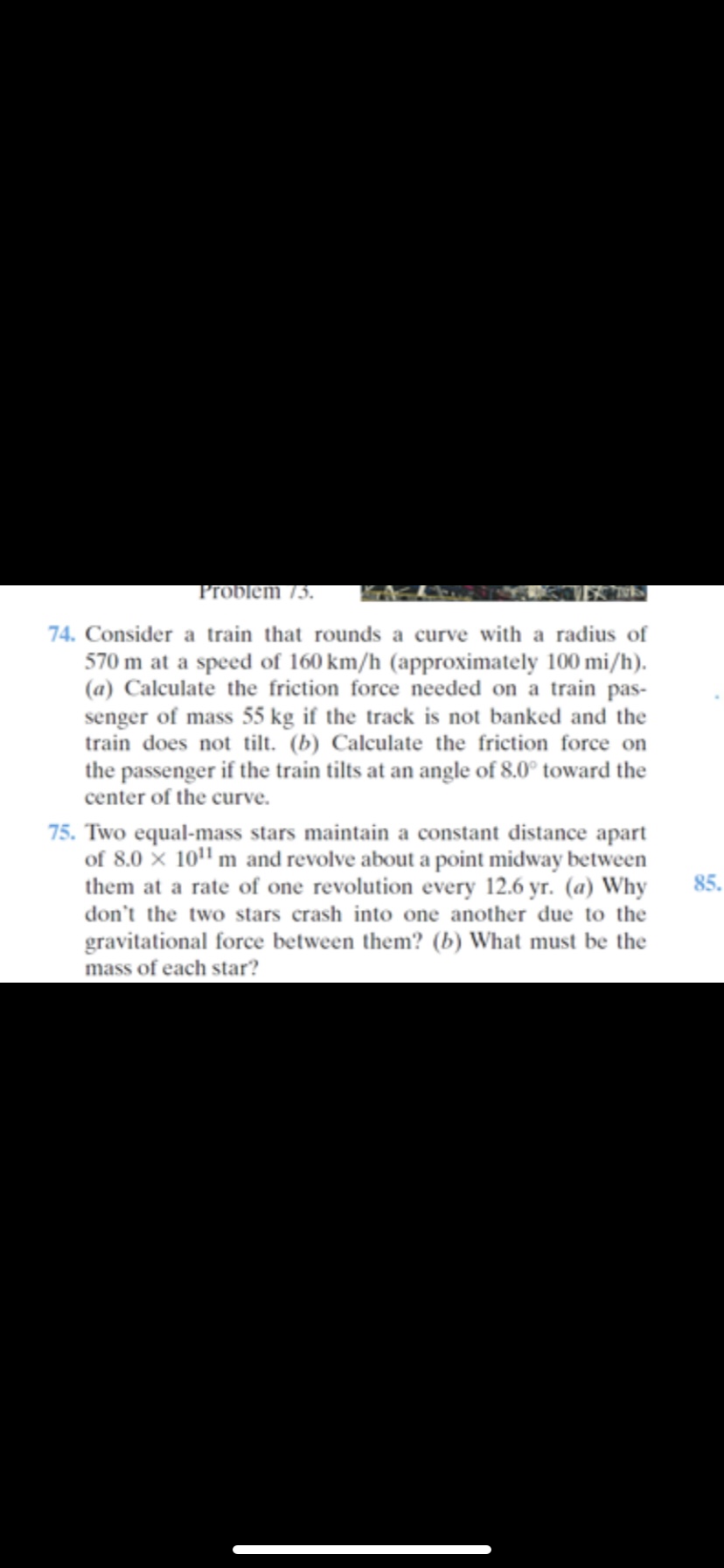Problem 73. 74. Consider a train that rounds a curve with a radius of 570 m at a speed of 160 km/h (approximately 100 mi/h). (a) Calculate the friction force needed on a train pas- senger of mass 55 kg if the track is not banked and the train does not tilt. (b) Calculate the friction force on the passenger if the train tilts at an angle of 8.0° toward the center of the curve.
Problem 73. 74. Consider a train that rounds a curve with a radius of 570 m at a speed of 160 km/h (approximately 100 mi/h). (a) Calculate the friction force needed on a train pas- senger of mass 55 kg if the track is not banked and the train does not tilt. (b) Calculate the friction force on the passenger if the train tilts at an angle of 8.0° toward the center of the curve.
Principles of Physics: A Calculus-Based Text
5th Edition
ISBN:9781133104261
Author:Raymond A. Serway, John W. Jewett
Publisher:Raymond A. Serway, John W. Jewett
Chapter5: More Applications Of Newton’s Laws
Section: Chapter Questions
Problem 49P: A space station, in the form of a wheel 120 m in diameter, rotates to provide an artificial gravity...
Related questions
Question
Both please, urgent struggle

Transcribed Image Text:Problem 75.
74. Consider a train that rounds a curve with a radius of
570 m at a speed of 160 km/h (approximately 100 mi/h).
(a) Calculate the friction force needed on a train pas-
senger of mass 55 kg if the track is not banked and the
train does not tilt. (b) Calculate the friction force on
the passenger if the train tilts at an angle of 8.0° toward the
center of the curve.
75. Two equal-mass stars maintain a constant distance apart
of 8.0 x 10" m and revolve about a point midway between
them at a rate of one revolution every 12.6 yr. (a) Why
don't the two stars crash into one another due to the
85.
gravitational force between them? (b) What must be the
mass of each star?
Expert Solution
This question has been solved!
Explore an expertly crafted, step-by-step solution for a thorough understanding of key concepts.
This is a popular solution!
Trending now
This is a popular solution!
Step by step
Solved in 2 steps with 2 images

Knowledge Booster
Learn more about
Need a deep-dive on the concept behind this application? Look no further. Learn more about this topic, physics and related others by exploring similar questions and additional content below.Recommended textbooks for you

Principles of Physics: A Calculus-Based Text
Physics
ISBN:
9781133104261
Author:
Raymond A. Serway, John W. Jewett
Publisher:
Cengage Learning

Principles of Physics: A Calculus-Based Text
Physics
ISBN:
9781133104261
Author:
Raymond A. Serway, John W. Jewett
Publisher:
Cengage Learning